Best Of
Top 11 Customer Engagement Metrics to Measure in 2025
Article written by Mathew Maniyamkott
Regular contributor to various magazines. Passionate about entrepreneurship, startups, marketing, and productivity.
19 min read
3 February 2025

Are you looking to track how your customers are engaging with your brand? Wondering what are the key customer engagement metrics that matter?
One of the main goals of businesses these days is to delight their customers. While it is important that you have a mechanism to get leads on auto-pilot, you are bound to lose them later on if you don’t have a strategy to keep them engaged.
So, in this article, we will delve into the many customer engagement metrics that will help your business keep track of your customers all along the way.
If you’re in search of a customer engagement tool that delivers essential metrics, streamlines data collection, and provides comprehensive analysis, consider exploring SurveySparrow. Experience its full suite of features firsthand with our free trial and discover how it can transform your approach to customer engagement.
Let's just go straight into the metrics to follow.
11 Key Customer Engagement Metrics & KPIs to Measure
Customer Engagement Metrics are crucial indicators of how your business is faring in engagement. Here are the top 11 customer engagement metrics that you should know about.
- Net Promoter Score(NPS)
- Customer Satisfaction (CSAT)
- Customer Effort Score (CES)
- Customer Lifetime Value (CLV)
- Customer Stickiness Factor
- Customer Engagement Score
- Social Media Stats
- Session Time
- Bounce Rate
- Core User Actions
- Pageviews
1. NPS (Net Promoter Score)
I’m pretty sure you’d have stumbled across a similar NPS survey from a product/service you use.
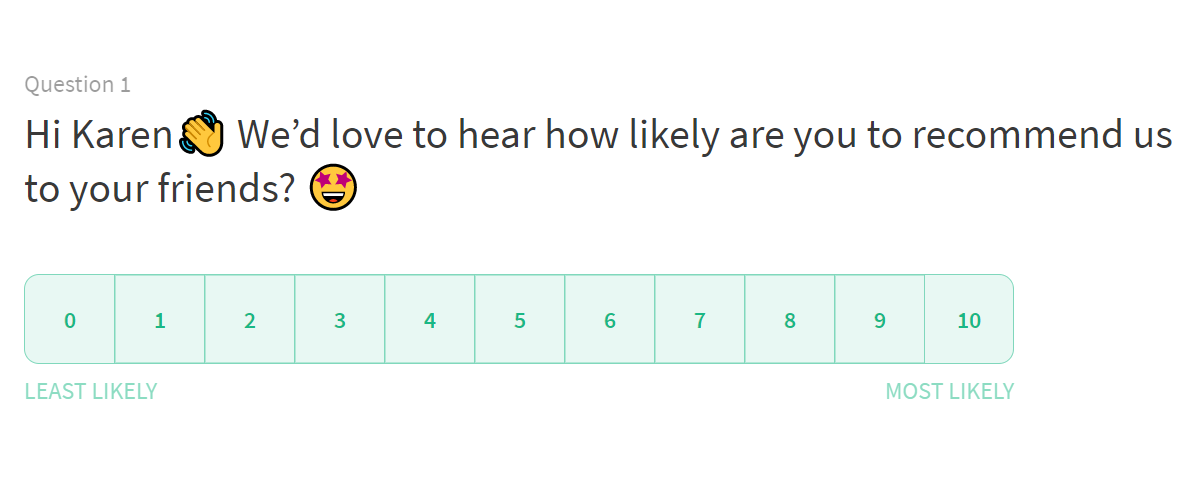
Net Promoter Score shows you how likely a customer is to recommend your product to their friends and family.
Here’s how the classification is done based on the scores given,
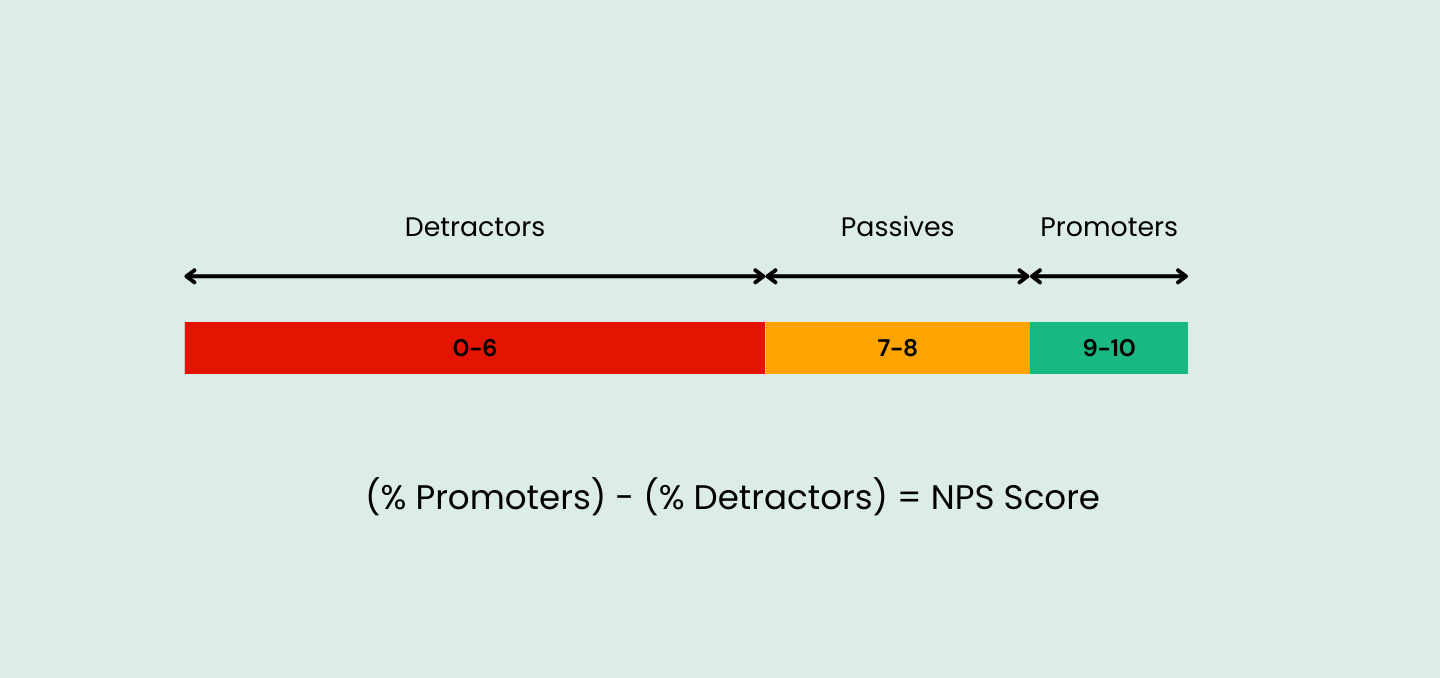
If you are focused on growth, no metric is greater than this as it gives you a good idea of how satisfied your customers are with you.
Here’s how you can personalize the NPS surveys to your customers:
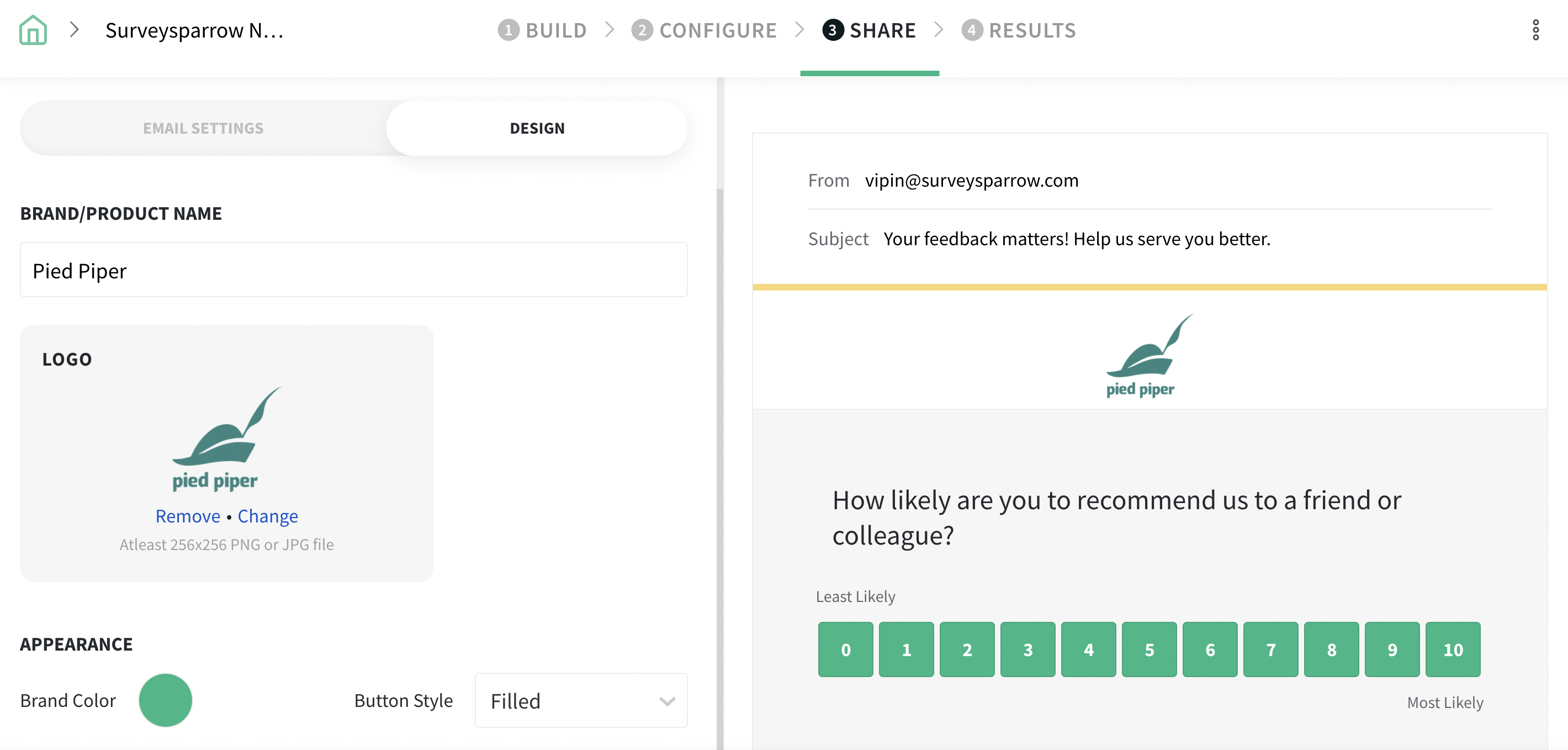
Collect this metric when you engage with them through in-app customer feedback forms or surveys. Each customer should be given the best possible service and NPS is a determiner of the same.
If someone’s score is less than a 9 or 10 (promoter), you need to ask them follow-up questions and close the feedback loop.
Start collecting the NPS scores even when your customer size is small. With the NPS score, you can make an immediate judgment about what is going wrong because you can send the survey exactly after a transaction and gauge the overall feeling of a customer towards your brand.
Create powerful NPS surveys to keep your customers’ pulse (and sentiments) in check. Try SurveySparrow for free.

Get The Best NPS Survey Software for Your Business!
A personalized walkthrough by our experts. No strings attached!
2. Customer Satisfaction (CSAT)
It is the most popular transactional metric. In a , the customer is asked how satisfied they are with the latest interaction they had with the company. It could be a recent purchase, interaction with a customer care agent, live-chat conversation, etc.
The CSAT survey is asked on a rating scale. While a simple feedback question is recommended, you can ask follow-up questions to learn more from the interaction. Here’s how you can understand customer sentiment and pulse with SurveySparrow.
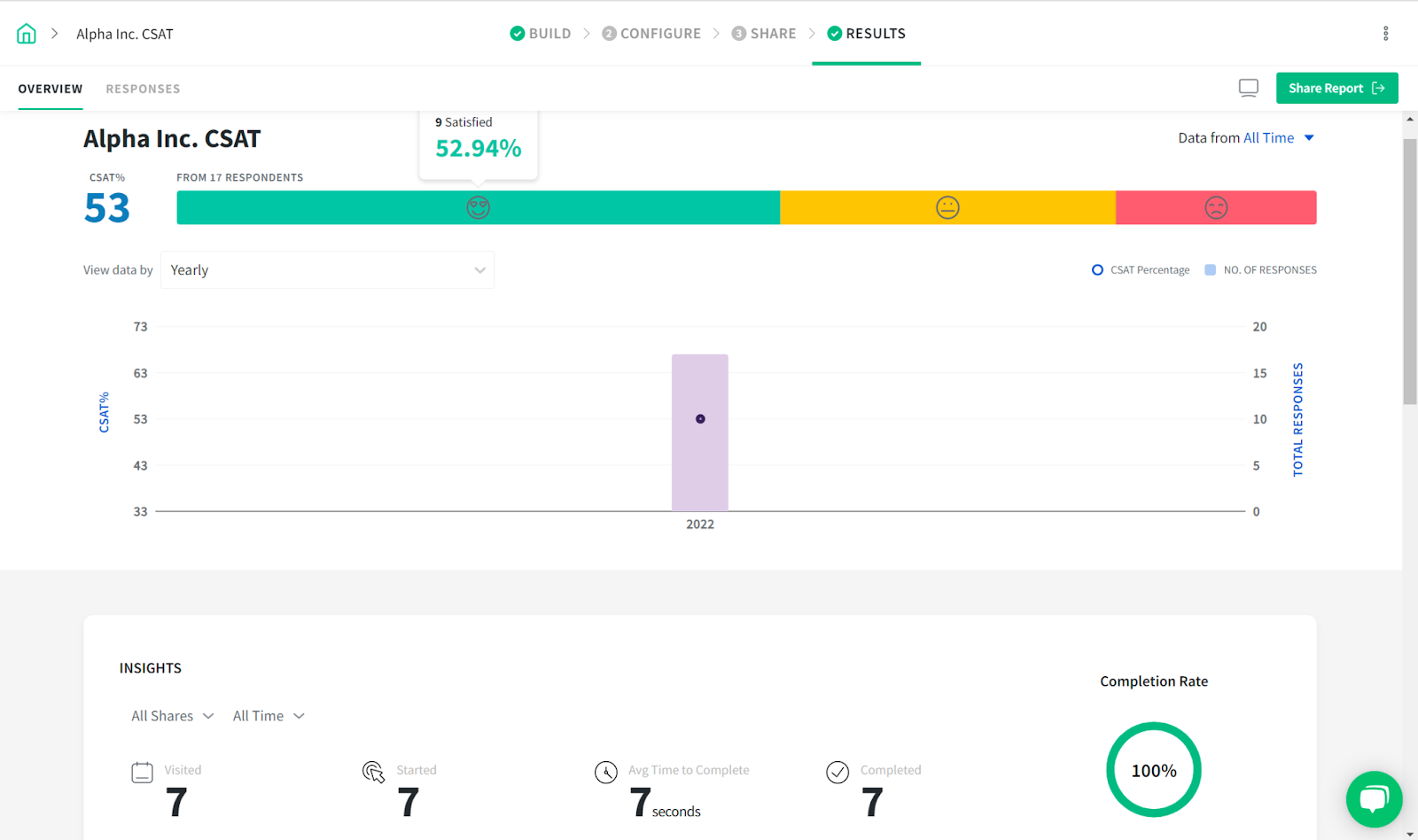
And, this is how to calculate CSAT Score
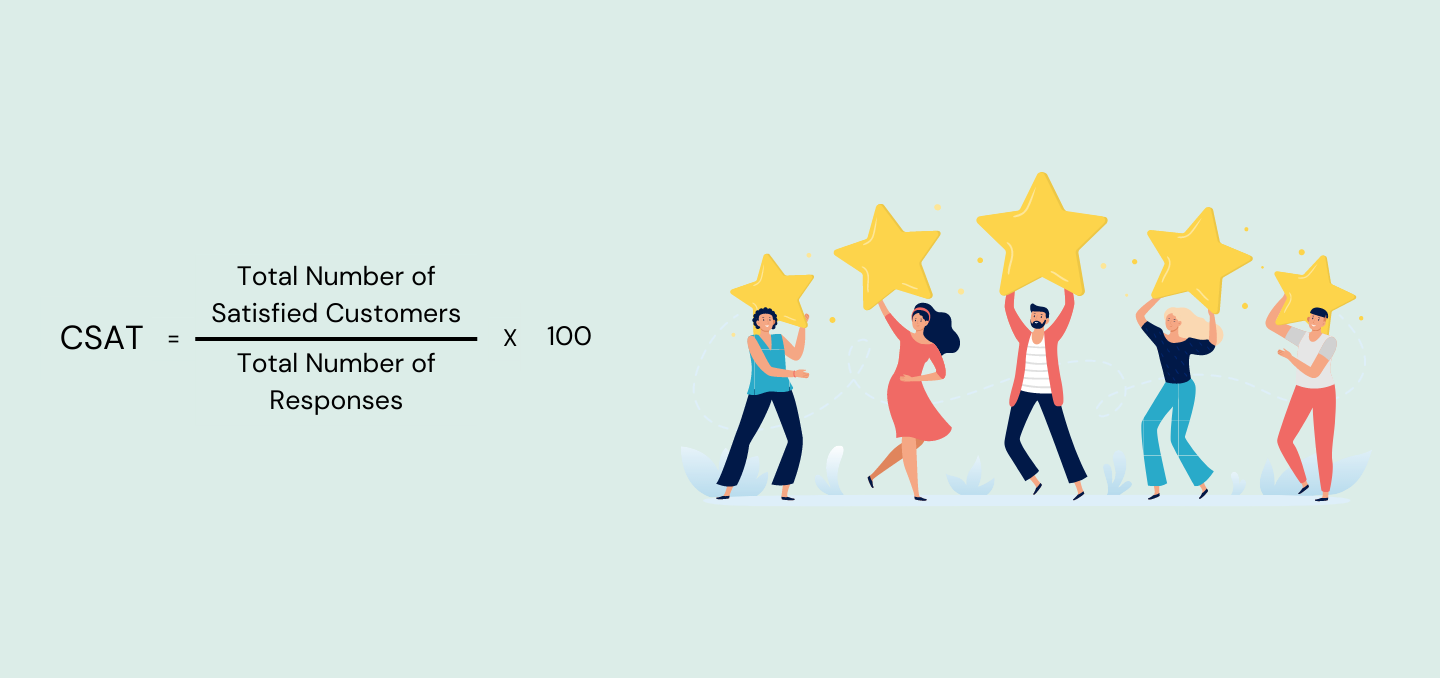
One of the most prominent uses of the CSAT score is to measure a customer’s satisfaction with a company’s customer service agents. It will help the business identify if someone needs more training or if the scripts that are used currently need to be modified.
For a business, CSAT is perfect because if you have just changed a feature or modified a product, no better metric can be used to measure it.
3. Customer Effort Score (CES)
CES is a user engagement metric that measures the minimum effort a customer puts in at various touchpoints.
So, it looks into how customers can accomplish a particular task or resolve an issue when interacting with a company.
Let’s look at the basic elements:
- Survey Question: Customers are asked a specific question to assess the level of effort. For example, a common question might be: “How much effort did you have to put into resolving your issue today?”
- Response Scale: Customers then provide their responses on a scale ranging from “Very Easy” to “Very Difficult.”
- Scoring: The responses are typically measured on a numerical scale, with higher scores indicating higher levels of effort. The scoring system can vary depending on the survey design.
For individual responses, sum the assigned numeric values and divide by the total number of responses to calculate the average. Alternatively, if using a Likert scale (e.g., 1 to 5), calculate the average score directly.
The formula is:
CES = Sum of Individual Scores/Number of Responses
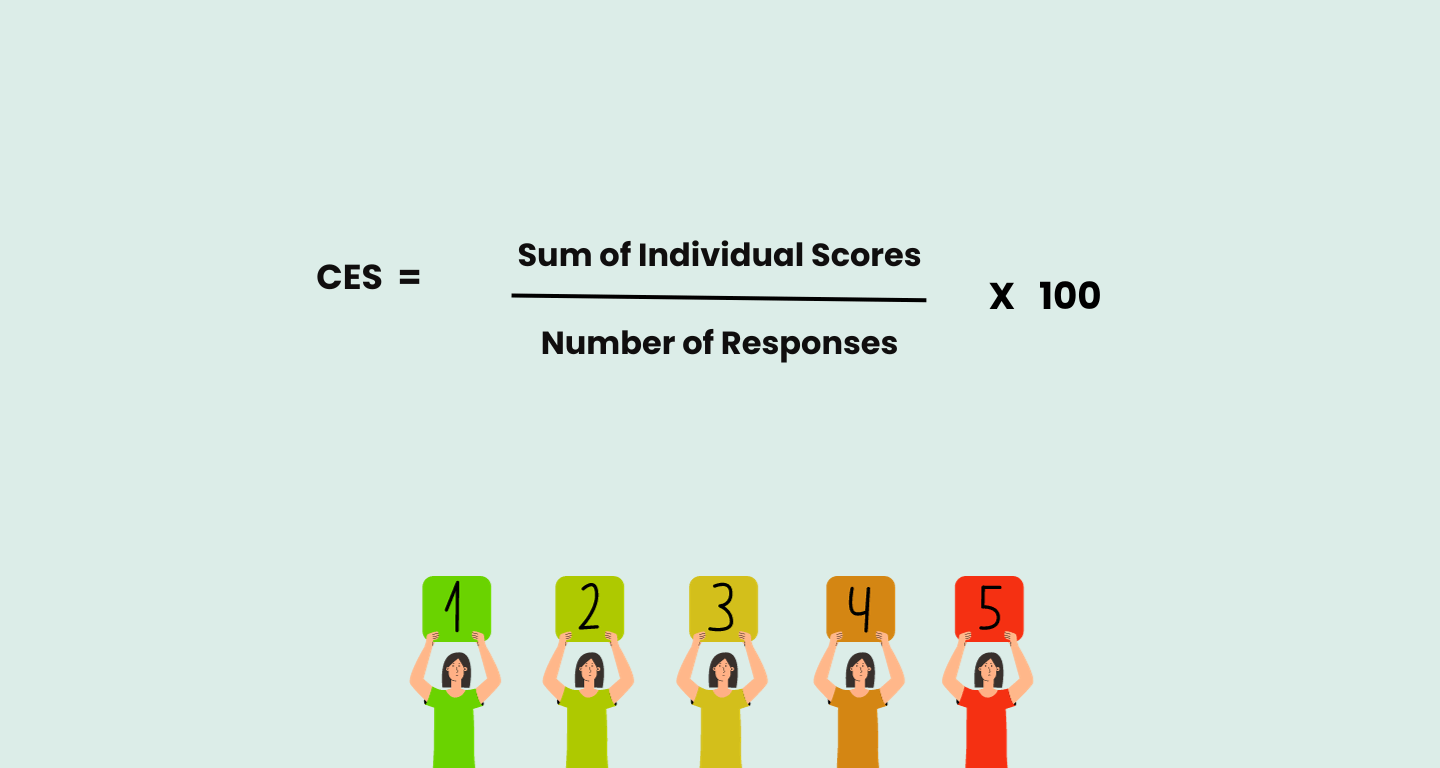
So, if you look at it from a broader perspective, the NPS, CSAT, and CES come under the umbrella of Customer Experience Surveys.

A personalized walkthrough by our experts. No strings attached!
4. Customer Lifetime Value
One of the most popular metrics of customer engagement, CLV, is the overall contribution by a customer to a company during their lifetime. There is no set number on what is considered a lifetime. The longer a customer remains with you, the higher the chance they spend money on you.
Not only would they be spending money by buying your products, but a customer who stays with you for a long time is as likely to recommend your business to a lot of his/her friends and family.
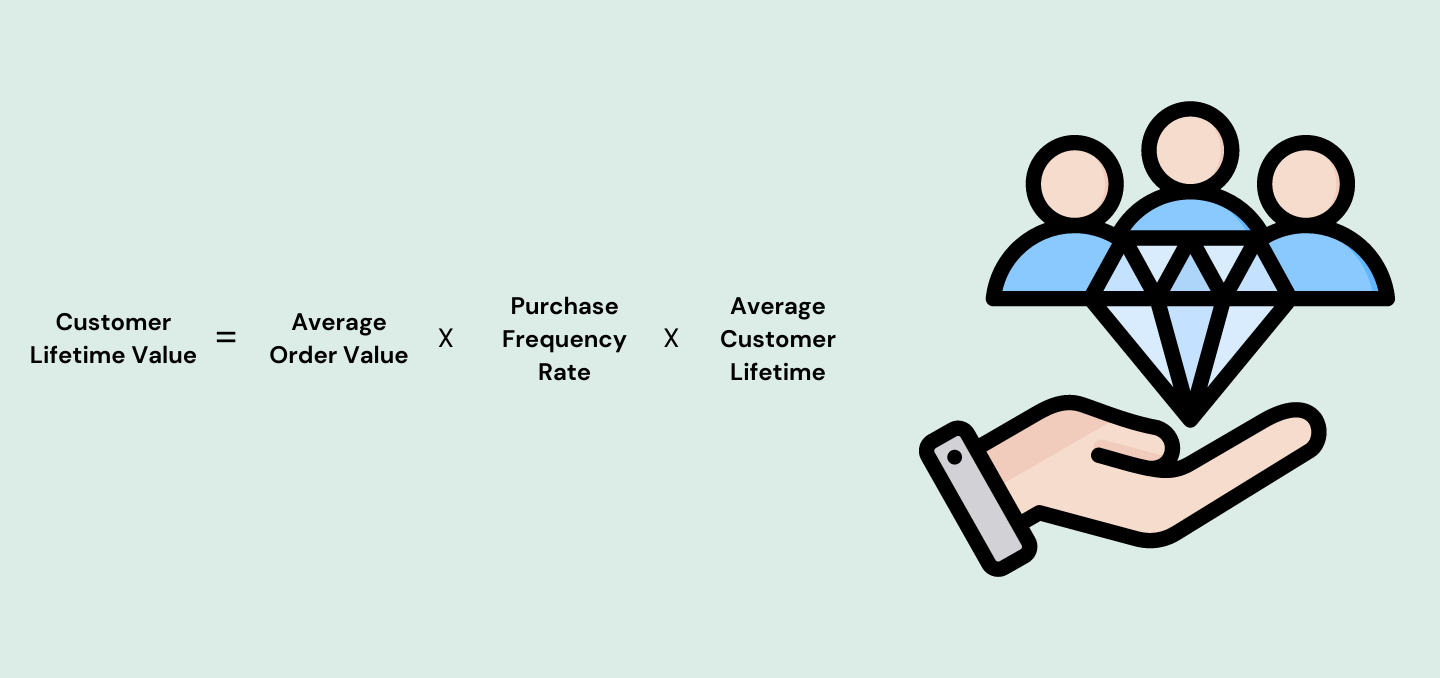
When CLV increases, you are making a great impression on them, and they are happy to stay with you and give you business.
You might have spent $5 on acquiring a single customer, but are you at a loss if they only buy a $3 product? Not necessarily. If you can convince them to buy products from you in the future, they will spend more money on you and even recommend you to their friends.
While it is advisable to keep the customer acquisition cost low, there are times when marketing efforts and other promotions take up a lot of the budget. This is where retaining customers and improving CLV become factors.
Customer Lifetime Value is important because the higher the number, the greater the profits that you will reap.
Acquiring new customers means that you have to spend 5-7x more than keeping an existing customer to stay happy with you.
When you have the CLV score, you should improve that value.
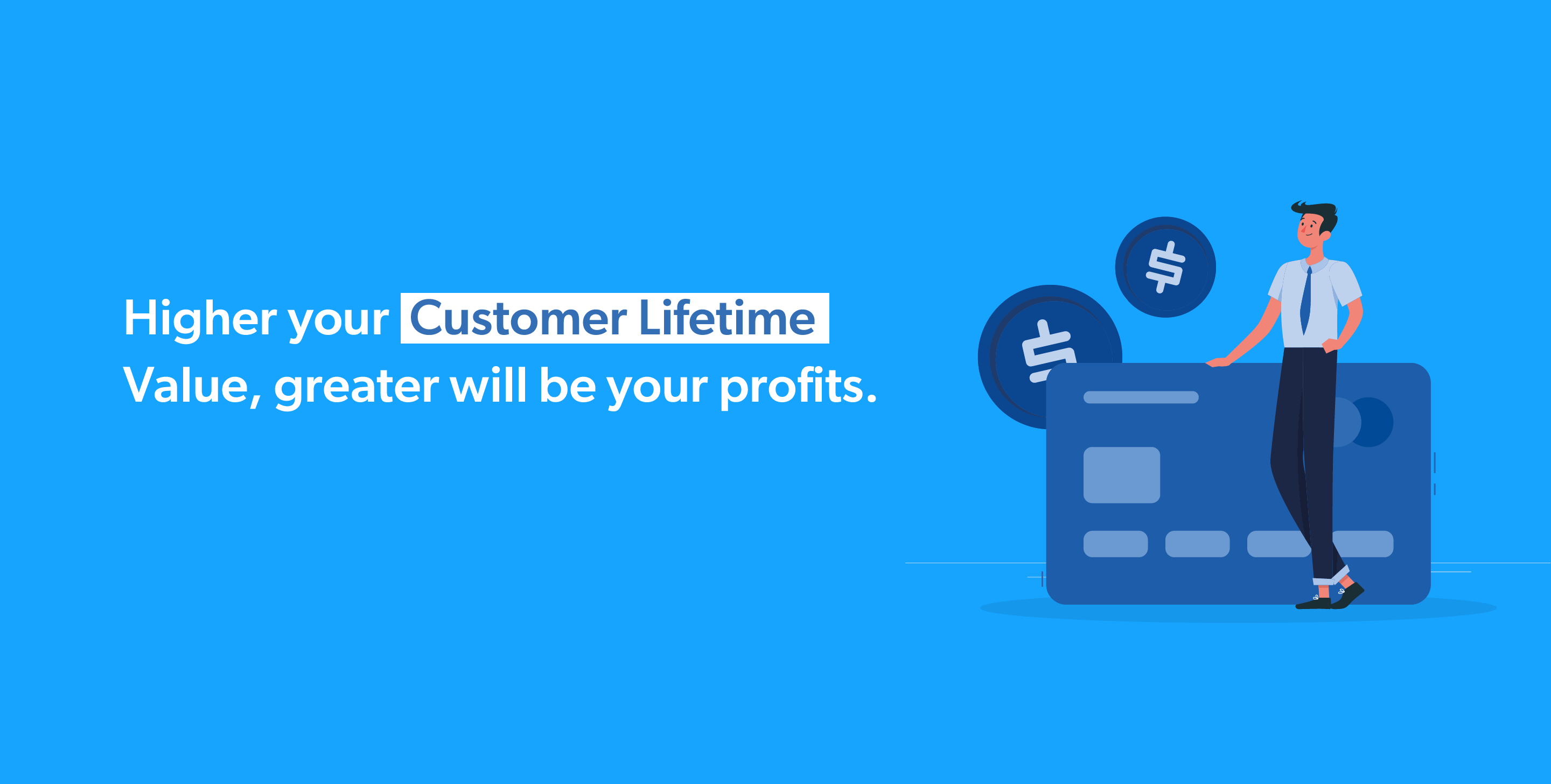
5. Customer Stickiness Factor
Does your marketing budget reduce when your customers don’t leave for your competitors? How, you may ask?
We know acquiring new customers is more expensive than keeping an existing customer to stay with you. Existing customers will be more than happy to buy your products at a premium and are more open to upselling and cross-selling.
Retaining your customers is a sign of great engagement, satisfaction, and finding value in what you offer. Customer Churn and Customer Retention measure the stickiness factor of your customers.
The churn rate is the rate at which a business loses its customers. Customer Retention is the ability of a business to retain its customers over a specific time period.
6. Customer Engagement Score
It is used to measure the engagement of your customer base. By using this, you can easily segment your audience, understand the areas where priority can be given, and measure the impact of these strategies. It is helpful in the evaluation of the engagement of customers as well as trial period customers.
It is the perfect model for measuring customer engagement for SaaS-based businesses. Offline companies will find it difficult to get insights about customer engagement as there is hardly any medium where their interaction and engagement can be measured.
But if you are an online business, you can easily measure customer engagement using the customer’s online behavior and interactions with the company’s products.
By measuring the customer engagement score, you can see who will be willing to convert from a trial period to a paid customer and identify the ones who will be ready to buy more products from you and the ones who are close to leaving you for a competitor.
How to measure Customer Engagement Score?
In this, the company must assess the value of its product to its customers. For example, a social media agency should be bothered about the number of likes to each of its client’s posts.
After writing down all the benefits associated with your product, the next step is to assign a weight to each of them. Benefit A might be more valuable than benefit B which means that it will have a higher value.
The formula for Customer Engagement Score (CES) will be like this:
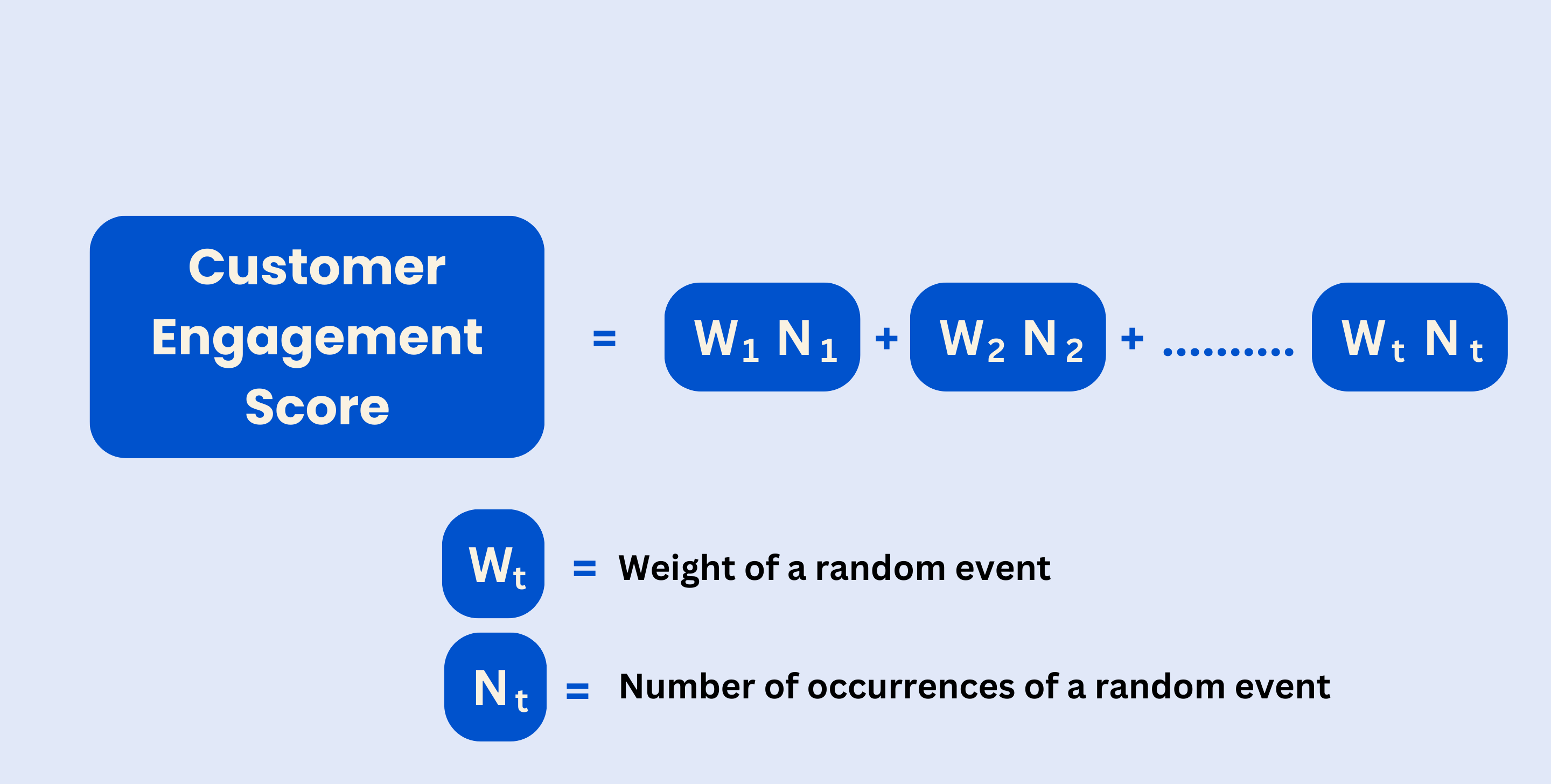
7. Social Media Engagement
For companies, social media is a blessing, as it is a great way to keep in touch with its customers. You might have a full-fledged in-house team handling your social media or an agency or even a single freelancer taking care of it.
It is not wise to ignore the kind of power that social media has. Platforms like Instagram play a key role in connecting with your audience and building your brand’s identity. To boost engagement and visibility, you can try iDigic for paid Instagram likes, which can amplify your presence and start conversations around your brand.
No matter what kind of industry you belong to, you should monitor the conversations there about your brand.
While likes, shares, and comments on your posts are one thing you need to be aware of, you should also proactively look for any other mentions on different social media websites.
Use this knowledge that you gather from your engagement to plan any marketing efforts in the future. Positive and negative comments about your organization should be monitored and dealt with accordingly.
It may be a lot to handle if you have a large following. When that’s the case, you can take the help of social media management tools.
You can use tools like Google Analytics, Twitter Analytics, Facebook Insights, etc. It will tell you how your customers are interacting with you. You can analyze why something has greater engagement than something else.
If you want to keep track of social media engagement for your brand, SurveySparrow’s reputation management module can come in handy. You can track online reviews from different platforms and tackle them individually by creating cases. You can turn your customers into brand advocates.
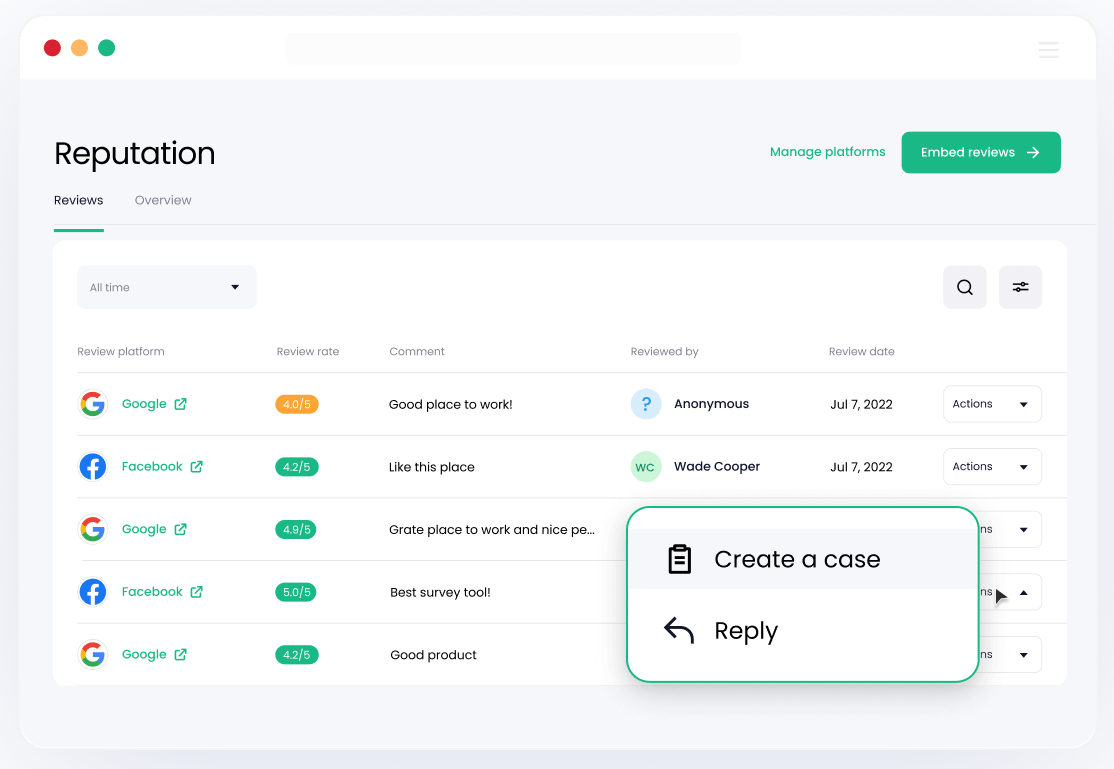
A personalized walkthrough by our experts. No strings attached!
8. Session Time
There might be a lot of effort in the marketing department to increase the reach of your product, but are you doing it right? Are you engaging your customers with your product?
One of the easiest ways to understand that is to measure the session time of customers. With a lot of users logging in to your website, you will know where they are more engaged. Is it at a particular page on the website or are they checking out everything you want to offer? You can tell a lot by viewing the activity of a few customers.
Many businesses are spending big bucks on content marketing, and if you want their attention too, then you need to be serious about measuring Session Time as a customer engagement metric.
If you want to know how much time was spent by your customers on your website, then you can take the help of Google Analytics. It tracks the page activities using timestamps every time a page loads or when an event is triggered.
9. Bounce Rate
It is inversely proportional to the average session duration. The percentage of website visitors that exit it after viewing only one page is called the bounce rate. The lower the bounce rate, the better it is for your business.
It indicates how good or bad your website’s content and UX is. If customers don’t spend a lot of time or are not even clicking on a different page on your website, they are not interested in the content.
People may bounce to a different website because they don’t feel the content is appealing, your offer isn’t clear, there is no differentiation, they were looking for different content, etc. Let’s say you have a high number of website visitors, but if your bounce rate is 95%, then it is something that you should seriously be looking over.
The only way to have a better bounce rate is to post quality content on your website and provide a great user experience for anyone on the website.
10. Core User Actions
Customers will engage more When they get a lot of value from your product. They will want to learn more about the features available, check out blog posts, and read testimonials and success stories to learn how other companies have benefited.
But if the user is on the app or website and is not taking any action indicating that they understand the problem, there is something wrong.
Here are some examples of core actions:
- Create a task
- Complete a task
- Add more people
- Create an invoice
- Comment on a post
The above are a few core user actions based on the kind of websites that you are using.
If the user is not checking out the various offerings on your website, then get on a call with the customer to identify if there is any problem.
Be as helpful as possible with the customer.
Be proactive in finding ways to keep the customer engaged to start using the product soon.
11. Pageviews
The final one is to make it to our list of customer engagement metrics. A pageview is a metric that is used to indicate the traffic that is there on your website.
It measures when a user visits a particular page on your website. When the Pageviews number is high, it means that a lot of people are interested in your offering.
While it shows traffic, there is not much you can learn otherwise from this metric since there is no context. Google Analytics can be used to measure most user engagement metrics.
Apart from showing how many people are on your website over a particular period, pageview analysis will also help you see if any changes you made to your website are performing well.
If there is more traffic than usual, then it means that the changes you implemented are working. You can keep improving that number by providing them with a good experience on the website.
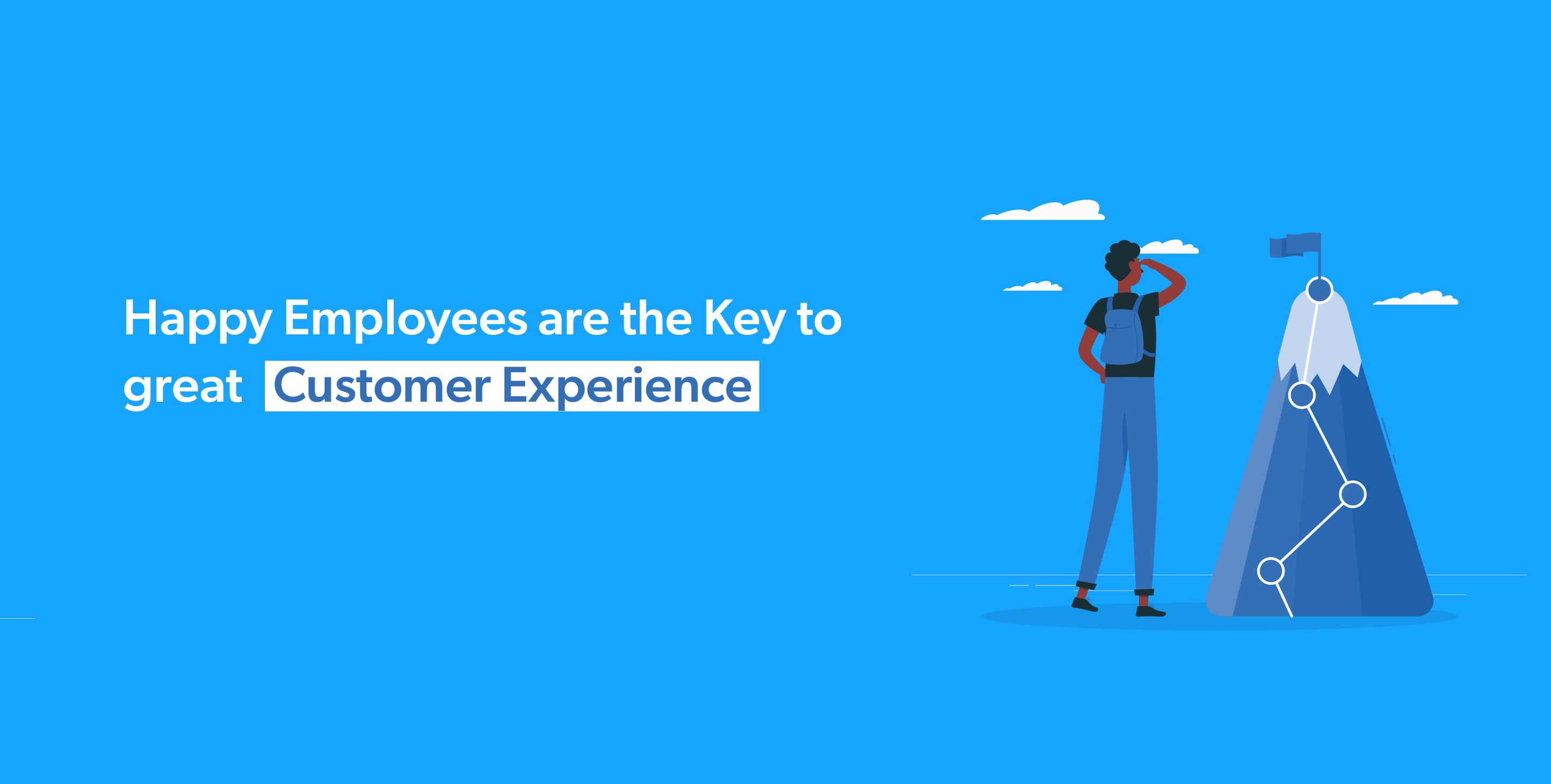
5 Main Benefits of Measuring Customer Engagement
Having engaged customers is pivotal to your brand as they are the ones who would be willing to talk more and spend time with your brand. If they don’t engage with your brand, then it means that they don’t care, and they will leave you for a competitor at the first sign of a problem.
Here are some pointers on why you should consider measuring customer engagement.

1. Build Customer Loyalty
Engaged customers are loyal customers.
When you connect with them, they’re more likely to stick around, make repeat purchases, and recommend your brand to others. This loyalty boosts your bottom line over time.
2. Boost Customer Satisfaction
Happy customers lead to a successful business.
By engaging with your audience, you show them that you care about their needs and preferences. This leads to higher satisfaction levels, positive reviews, and valuable referrals.
3. Strengthen Your Brand Reputation
Regularly engaging with customers helps build a positive image for your brand. Satisfied customers share their experiences, attracting new clients and reinforcing trust in your business.
4. Gain a Competitive Edge
Marketplaces have become brutal. Therefore, it's crucial for you to have something to stand out. Sometimes, what your business needs might be engagement.
Companies that excel in customer engagement differentiate themselves from competitors. This can further drive growth and attract new customers.
5. Personalize the Customer Experience
Tracking engagement metrics allows you to understand what your customers want. This insight enables you to tailor your offerings and communications, making them more relevant and appealing to each individual.
Why is SurveySparrow the Best Software to Measure Customer Engagement Metrics Successfully?
SurveySparrow is often highlighted as one of the best software options for Customer Experience Management (CEM) for several reasons. While the specific advantages can vary based on the unique needs of a business, several key features generally contribute to its reputation:
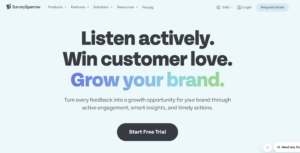
1. Intuitive Design
SurveySparrow’s platform is user-friendly, enabling businesses to effortlessly create, distribute, and analyze surveys. Its straightforward interface helps improve response rates and collect quality feedback.
2. Versatility
The software caters to a wide range of survey needs with various types, including customer satisfaction, employee engagement, and NPS surveys. This flexibility allows companies to customize their approach to measuring customer experience across different touchpoints.
3. Advanced Analytics
SurveySparrow offers comprehensive analytics tools that provide detailed insights into customer feedback. Businesses can identify trends, patterns, and areas needing improvement, making data-driven decisions to enhance customer experience.
4. Automation and Integration
The platform automates repetitive tasks like survey scheduling and sending reminders, saving time and ensuring consistency. Its ability to integrate with other business systems (e.g., CRM, marketing tools) means customer experience data can influence wider business strategies effectively.
5. Personalization
Surveys can be highly personalized, improving engagement and the relevance of feedback. SurveySparrow allows for custom branding and dynamic questions that adapt based on respondent behavior, making each survey feel more relevant to the participant.
6. Omni-channel Distribution
With SurveySparrow, businesses can distribute surveys through various channels, including email, SMS, social media, and websites. This ensures that surveys reach customers where they are most active, increasing the likelihood of engagement and response.
7. Strong Customer Support
SurveySparrow is recognized for its excellent customer support and a wealth of resources, such as tutorials and live support. This is especially beneficial for businesses that are new to CEM or those looking to expand their customer experience initiatives.
8. Scalability
The platform is designed to scale with the business, accommodating an increasing number of surveys and respondents as the company grows. This scalability ensures that SurveySparrow remains a viable tool for businesses of all sizes, from startups to large enterprises.
A personalized walkthrough by our experts. No strings attached!
Wrapping Up
Are there only 11 customer engagement metrics that need to be tracked? Of course not.
There are many customer engagement metrics that you can track to keep your customers engaged. There are a lot of things that go into making your customers engage with your product.
Measuring your customers’ engagement with your product is important for your success.
Without understanding how customers engage with your product, there will be no improvement. Remember that there are too many choices for your customers and if you don’t give them the experience they deserve, they will surely go to a competitor.
There are actually several tools that can help you track customer engagement and identify the areas that need betterment and the ones that are fine.
Customer experience isn’t just a number, nor is it something that tools can tell you a lot about, although, for study, tools are great.
But you need to go beyond mere numbers because customers are more than just a statistic, they are people and you need to treat them right if you want them to get the best from you and vice versa.
Here is a pro-tip!
Happy Employees are the key to great Customer Experience
Only your employees can ensure that their overall brand experience is the same across all channels. Improving your customer engagement metrics will result in bigger profits and keep your customers loyal to your brand.
Start 14 Days free trial

Mathew Maniyamkott
Guest Blogger at SurveySparrow
Frequently Asked Questions (FAQs)
Customer engagement metrics are basically what you track and measure to understand how engaged your customers are. These include customer satfiaction, retention, loyalty, and more.
The 4 P's of customer engagement are Product, Price, Place, and Promotion. These guide businesses in creating effective marketing strategies to improve customer interactions.
The 3 C's of customer engagement are - Character, Competence, and Connection. These focus on building trust and strong relationships with customers through integrity, expertise, and personal bonds.
Related Articles

Employee Experience
Employee Evaluation Checklist: Evaluate Employee Performance in 2025
11 MINUTES
21 January 2021

Best Of
10 Best Gif Sites to Get Great Memes in 2024
14 MINUTES
8 June 2020

Customer Experience
The Feedback Funnel in Customer Service: A Tell-all Guide
8 MINUTES
4 July 2024

Best Of
Dedicated, Shared or Managed: Which Hosting Options Are Available to WordPress Users?
7 MINUTES
9 August 2022
